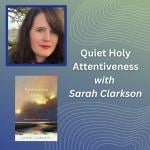 I first recognized a particular wordsmithing challenge when I visited one of Nairobi’s slums three-plus years ago. As I sat before my laptop to write about the visit before the city’s unreliable electricity could interrupt me, I was daunted by the difficulty of a challenge I don’t remember learning about in my college journalism classes.
I first recognized a particular wordsmithing challenge when I visited one of Nairobi’s slums three-plus years ago. As I sat before my laptop to write about the visit before the city’s unreliable electricity could interrupt me, I was daunted by the difficulty of a challenge I don’t remember learning about in my college journalism classes.
Beaming blog posts about my slum visit back to people at home who had never experienced Africa, who perhaps had never conversed with someone from Africa, or who might not even have visited a depressed community in the United States made me realize that words matter.
Take the word “slum.” I was hesitant to use it at all, but I needed to tell friends and followers about my formative visit to a place identified by this loaded word. Growing up reading missionary letters and, later, trying to stay informed regarding news from developing countries meant I’d run into “slum” often enough, and I discovered that the word pictures and photographs accompanying it had created images in my head that reality only partly bore out.
What if this were the same for my readers? I wanted to tell a different story than the one I’d read by hundreds of writers before me. But I wasn’t sure that word would let me.
Most stories about slums decry their poverty, their crowdedness, their refuse-ridden pathways, and their sickness. When I visited an orphanage in Nairobi’s Mathere (muh-THAR-ay) slum with a medical missionary friend, I discovered that those images held some accuracy. But my short couple hours in one of the slum’s communities showcased other things too.
As we bumped around the corner toward the orphanage and exited the van, we were greeted by a lively three- or four-year-old girl playing on the far side of a ditch from us while one woman plaited another’s hair and a shy little boy played nearby. The joyful-eyed girl and I exchanged fun waves and smiles before I followed the others through a bright blue gate to meet the amazing Mama Mercy, whose orphanage began unintentionally when she started providing refuge for her children’s orphaned friends. Later I watched some of the kids show off acrobatic skills across the street where the mulch and trash carpet of the orphanage’s tiny farm created a soft landing spot for impressive aerial stunts given lift by an old tire transformed into a trampoline. A few feet away cows rustled in their open-sided barn, and a goat rooted for treasures. Downhill from there I spotted cheery purple flowers on a vine climbing the patchwork tin side of one of the slum homes.
So many people come to the slums and leave telling stories of the terrible things they saw. But I didn’t just see terrible. What I saw were people and spots of beauty that resist the negative adjectives readily associated with “slum.”
My challenge as a writer was to help readers see that same beauty. Mathere slum and her people helped me realize it’s possible to tell an accurate story that isn’t actually true because it has exaggerated one part of the story to the detriment of the rest of it, creating a caricature that resembles the real thing but would never pass as a true likeness. Telling a story of Mathere’sugliness while ignoring its beauty dishonors my audience, the people of Mathere, and even me, the writer. Everyone in the exchange—the readers, the subjects, the author—is made in the image of God. And Mathere has left me considering how to honor that image-of-God-ness through the words I choose as a storyteller.
Editor’s Note: This post from TheHighCalling.org by Kami Rice is being shared here as part of our series on The Power of Storytelling.
[Photo by Claire Burge, used under a creative commons license, sourced via Flickr.]
The Power of Storytelling
When my children were young, telling stories at bedtime was always one the best parts of our day. I usually read stories straight from a book. But, my husband made up stories to tell the children and those stories continue to show up in conversations, even now that our children are adults. Stories are powerful, and we may tend to forget that as we grow up and move on into board rooms and classrooms and carpool lanes.
What can a story provide in a board meeting that facts and figures alone can’t accomplish? How has storytelling improved relationships among coworkers, especially coworkers whose faith is different from mine? What are some of the best stories ever told in the workplace, and why did it make a difference? Why is it important to be able to tell a good story and what is a good story anyway? In this series at The High Calling, we take a look at The Power of Storytelling in the workplace. Pull up a chair and join us in the conversation.












